There are a number of different types of lawn weeds that are actually invasive grasses in the UK.
In this guide, we’ve explained how to identify common types of invasive grasses, and how to get rid of them.
How to spot invasive grasses
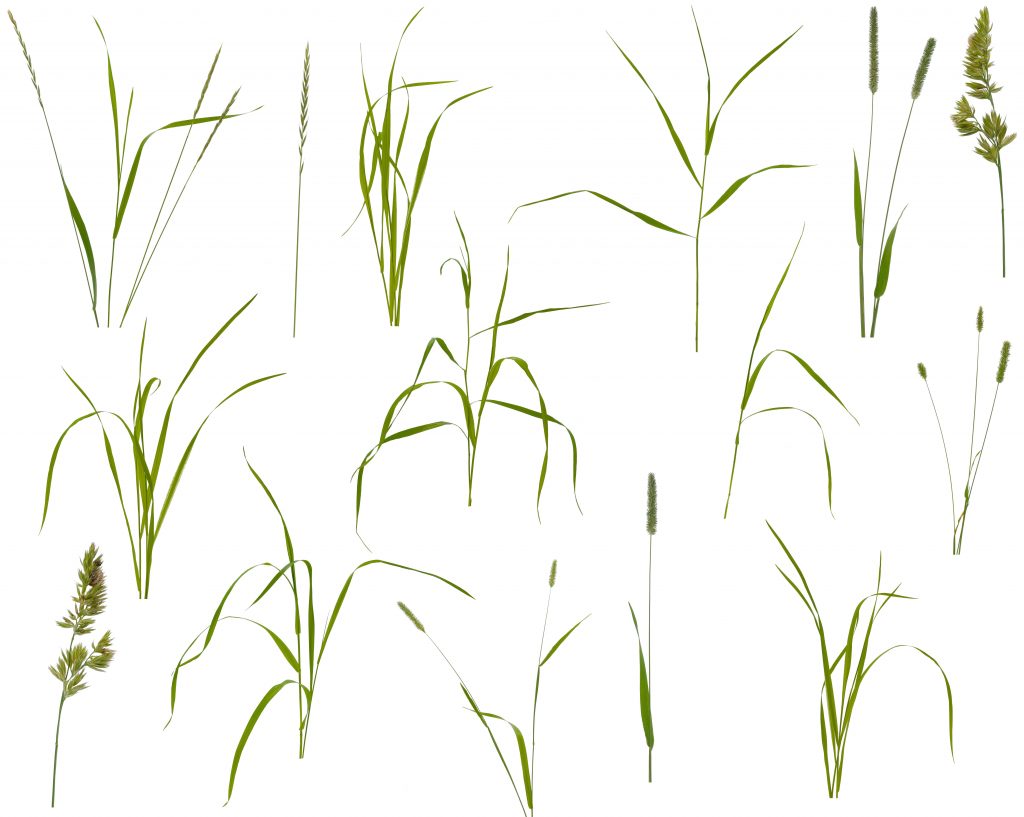
Different species of invasive grasses each have their own distinct look, as we’ve explained in the next section. However, there are some tell-tail signs to look out for, to tell whether you have invasive grasses on your lawn.
- Invasive grasses are essentially weeds that look like grass. They are often green, but are normally a different shade of green (often a lighter shade) to the rest of your grass.
- Invasive grasses have a different leaf pattern to the rest of your grass. They are easily distinguishable as a different species of grass, and they grow differently – most of these types of weeds grow outward from the centre of the plant, rather than straight upwards like most types of grass.
- Invasive grasses often appear in patches, and spread over time. They may begin to take over your grass quite aggressively, especially if your lawn isn’t in the best of health.
- Invasive grasses often form seed heads at quite a low height compared to the rest of your grass.
In essence, invasive grasses are just like weeds, except they blend in a bit better. They also don’t produce bright yellow or orange flowers, like some other types of weeds.
You can leave these types of grasses on your lawn if you want, but they can spread quickly, and often ruin the look of your lawn.
What causes invasive grasses to spread on your lawn?
Invasive grasses and other types of weeds initially come to your lawn as seeds in the wind, or in something that you’ve brought into the garden, such as new topsoil, or poor quality seeds/turf.
Weeds do best when your lawn is at its worst. If your grass is quite sparse for example, this gives weeds much more room to grow. If the grass you actually want to grow is doing well, this makes it much harder for invasive grasses to take hold.
Common types of invasive grasses
Here are three of the most common types of invasive grass species in the UK, and how to spot them.
1. Annual meadowgrass
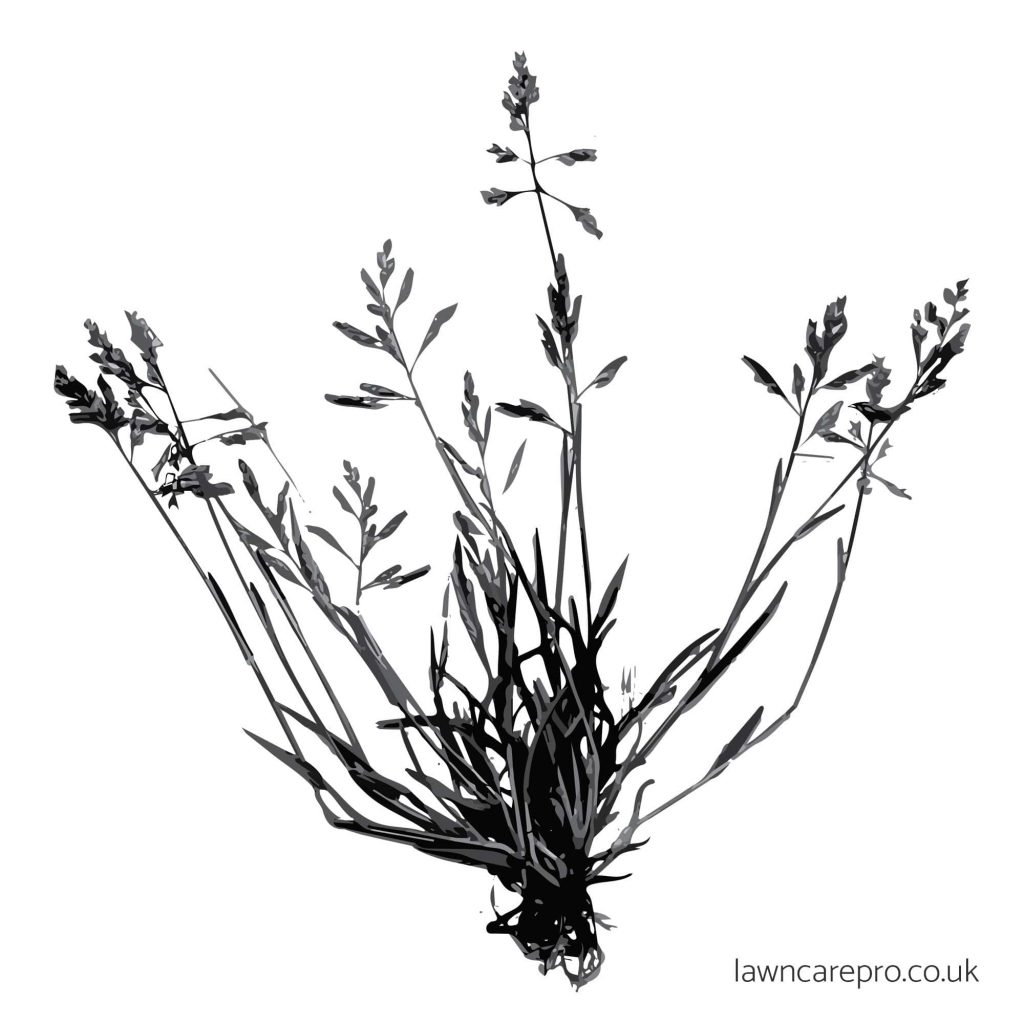
Annual meadowgrass, as the name implies, looks like the type of unkempt grass you might find in a meadow.
It has relatively fine leaves, but isn’t as fine as fescue (a common lawn grass in the UK), which can help you to identify it. Also, annual meadowgrass tends to produce flowers even when quite short, and often has a lighter colour than the rest of your lawn.
2. Yorkshire Fog
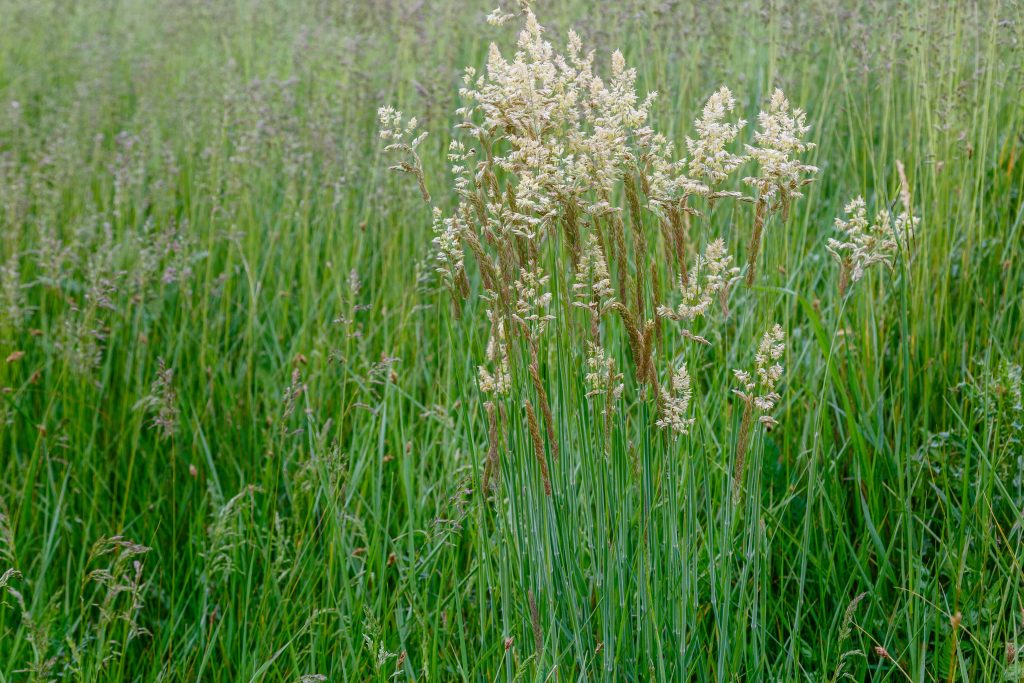
Yorkshire Fog is another common type of unwanted grass, that often looks a lighter shade of green on your lawn. It also has quite large, hairy leaves.
This type of grass isn’t normally a huge deal, as it doesn’t flower or produce seed heads at a low height, unlike annual meadowgrass, although it does produce purple or white seed heads when it gets tall. However, Yorkshire Fog can look quite bad when it gets out of control, especially when long.
3. Ryegrass
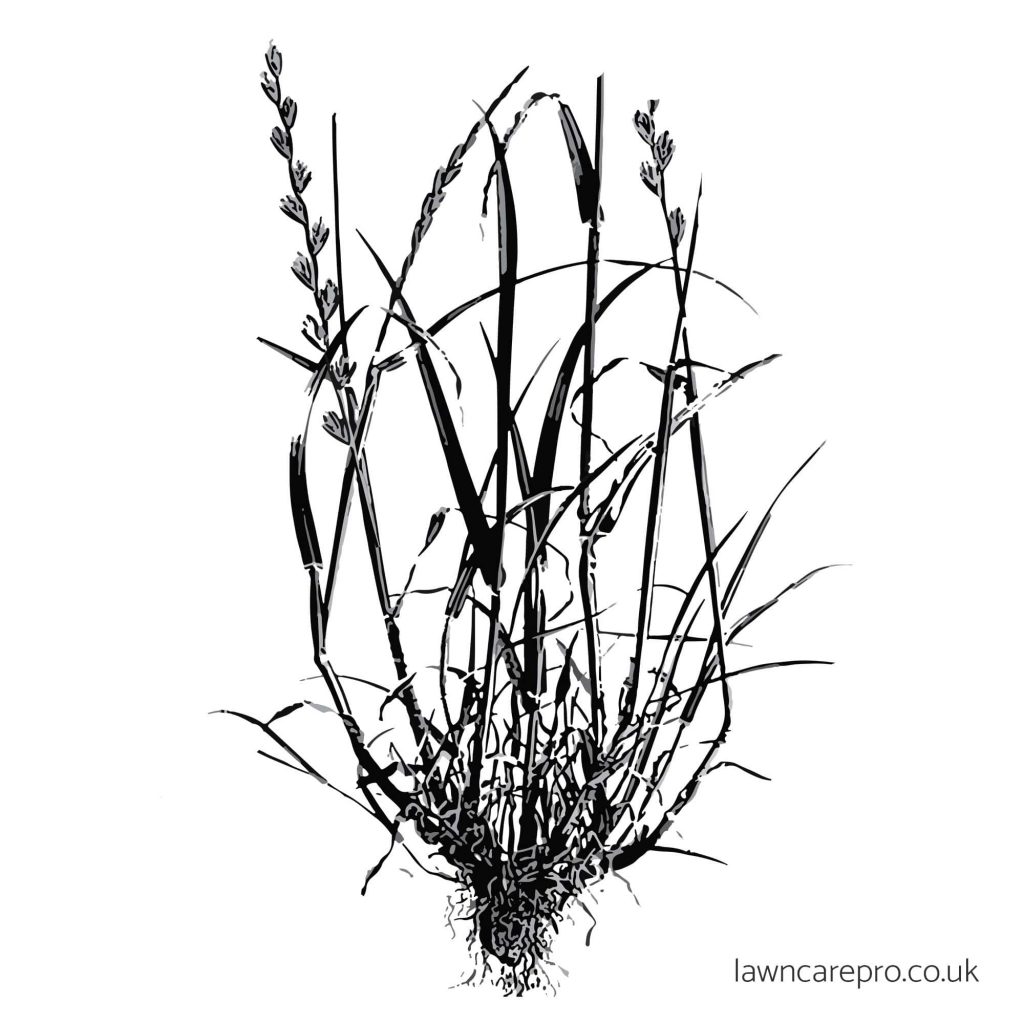
Ryegrass is very common in the UK, and although technically an invasive grass, it’s not normally considered a weed.
This type of grass is similar to annual meadowgrass, but is darker, and grows tall (rather than outward), helping to make it look a more natural part of most lawns.
If you have a lawn mostly made up of fescue (a fine, neat type of grass) then you may want to consider removing patches of ryegrass, if it looks unsightly. However, you may also choose to leave it be, if it’s not spoiling the look of your lawn.
Other types of invasive grasses
Of course, there are also other, less common types of invasive grasses in the UK that you might like to get rid of. They can usually be identified by their colour, direction of growth (more outwards than upwards), and from having much broader leaves.
How to get rid of invasive grasses
Once you’ve identified the invasive grasses on your lawn, here’s how to get rid of them, and prevent them from coming back.
Removing the unwanted grass plant
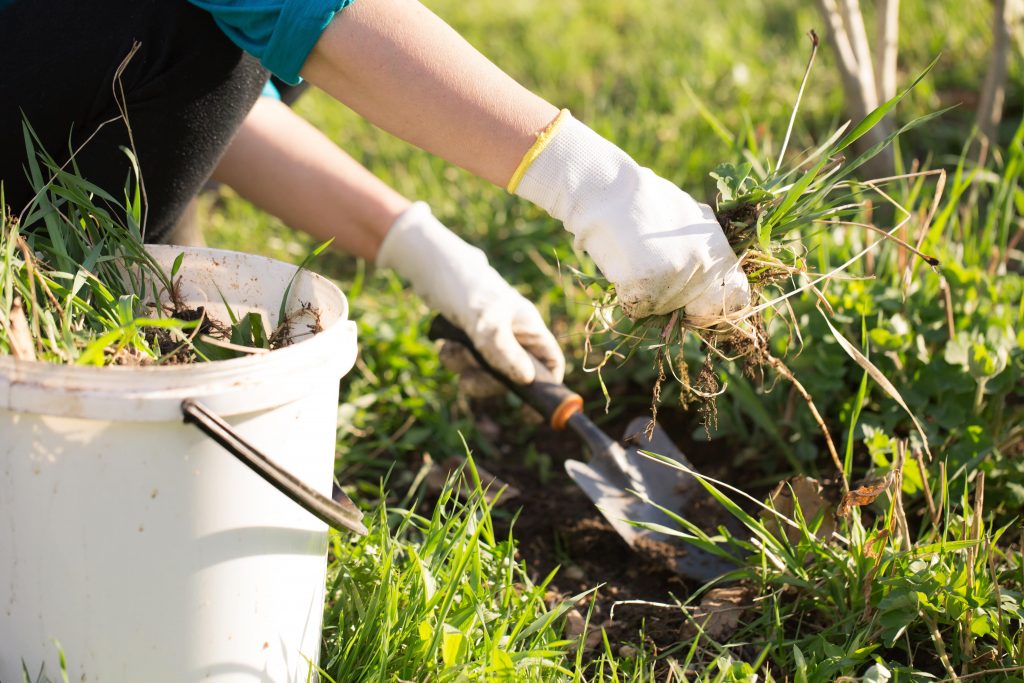
First, you need to get rid of the unwanted grass plant. If possible, the best way to do this is to dig it out of the ground by hand, taking it by the roots, using a hand shovel or a weed puller. This is because alternative ways, such as using homemade or storebought herbicide sprays, can damage your lawn.
If there are too many invasive grass plants to remove them individually, you can:
- Mow the lawn more regularly, and keep it a bit shorter. Invasive species of grass don’t respond very well to being mowed often, while the types of grass you want on your lawn prefer being mowed often. However, always ensure to follow the one-third rule: never take off more than a third of the height of your grass with a single mow.
- Ensure to water the lawn in summer. Weeds and invasive grasses do a lot better than regular grass in warm, dry conditions, which is why they often pop up in the middle of summer.
- Take better care of your grass in general, to give it a better chance of growing better, and “fighting off” the invasive grasses. You can read our lawn care calendar to discover some basic steps you can take to improve the health of your lawn. But in short, you should consider fertilising or adding mulch to your lawn, scarifying it if you have a lot of thatch, aerating it, especially if you sometimes have drainage problems, and overseeding the lawn if it’s looking a bit bare.
- Use a small, direct application of herbicide on individual plants. Be aware that if you use weed killer, you will likely kill some of your turf grass as well – this is unavoidable. You can also use a natural, homemade weed killer, such as two parts vinegar and one part baking soda, to avoid some of the negative effects that herbicides have on the ecosystem, such as killing microorganisms in the soil. However, you are still likely to kill parts of your lawn by doing this, and you may also upset the pH of your soil.
There are also more specific ways of killing some types of invasive grass species. For example, annual meadowgrass does not like acidic soil, so top dressing with lime can help to kill it quite quickly.
The trouble is, it can something be quite difficult to identify the exact species of grass you’re dealing with, unless it’s one of the most common varieties, such as annual meadowgrass or Yorkshire Fog.
Reseeding the affected area

Now that the grass plant is gone, you will likely want to reseed the area it occupied.
Of course, you can leave the empty space bare, especially if there weren’t many weeds on your lawn. However, this won’t look great, and it can result in weeds taking up the bare spots.
It actually takes grass quite a long time to spread to bare patches, which is why we recommend overseeding if possible.
Read our guide to fixing bare patches in grass to learn more about this process. In short, you want to spread the seeds, ideally by hand if the bare patches are quite small. Then, you want to give the seeds a good soaking, continue to water them for the next few weeks, and keep foot traffic off the affected areas of your lawn for at least a month, ideally longer.
Preventing invasive grasses from returning
Now that the invasive grass is gone from your garden, there are some steps you can take to prevent it from coming back, or at least prevent it from spreading very much, if it does return.
Other than fixing bare patches on your lawn, you also need to take care of your lawn, to help it grow strong, and avoid giving invasive grass species the chance to grow.
- Overseed the lawn if it’s a bit sparse, to fill in any gaps where invasive grasses could grow.
- Mow the lawn more regularly, keeping it relatively short, especially in the warmer months.
- Feed the lawn regularly, such as with mulched grass clippings, or fertiliser.
- Improve drainage if you sometimes see water sitting on your grass, such as by aerating it.
- Consider whether you have enough top soil, and think about adding more, if necessary. Weeds tend to grow better than grass in poor soil conditions.
Also, keep an eye out for invasive grasses returning. If you spot them, try to remove each plant by hand immediately, to reduce the likelihood of the invasive grasses spreading.

I’m Josh, and I’m the head writer at Lawn Care Pro.
I love everything lawns, but I’m a bit of a lawn mower nerd. I spend a lot of my free time tinkering with mowers, and planning my mowing schedule for the next few weeks.
I’m also into cars, which comes in very helpful when servicing a mower engine!

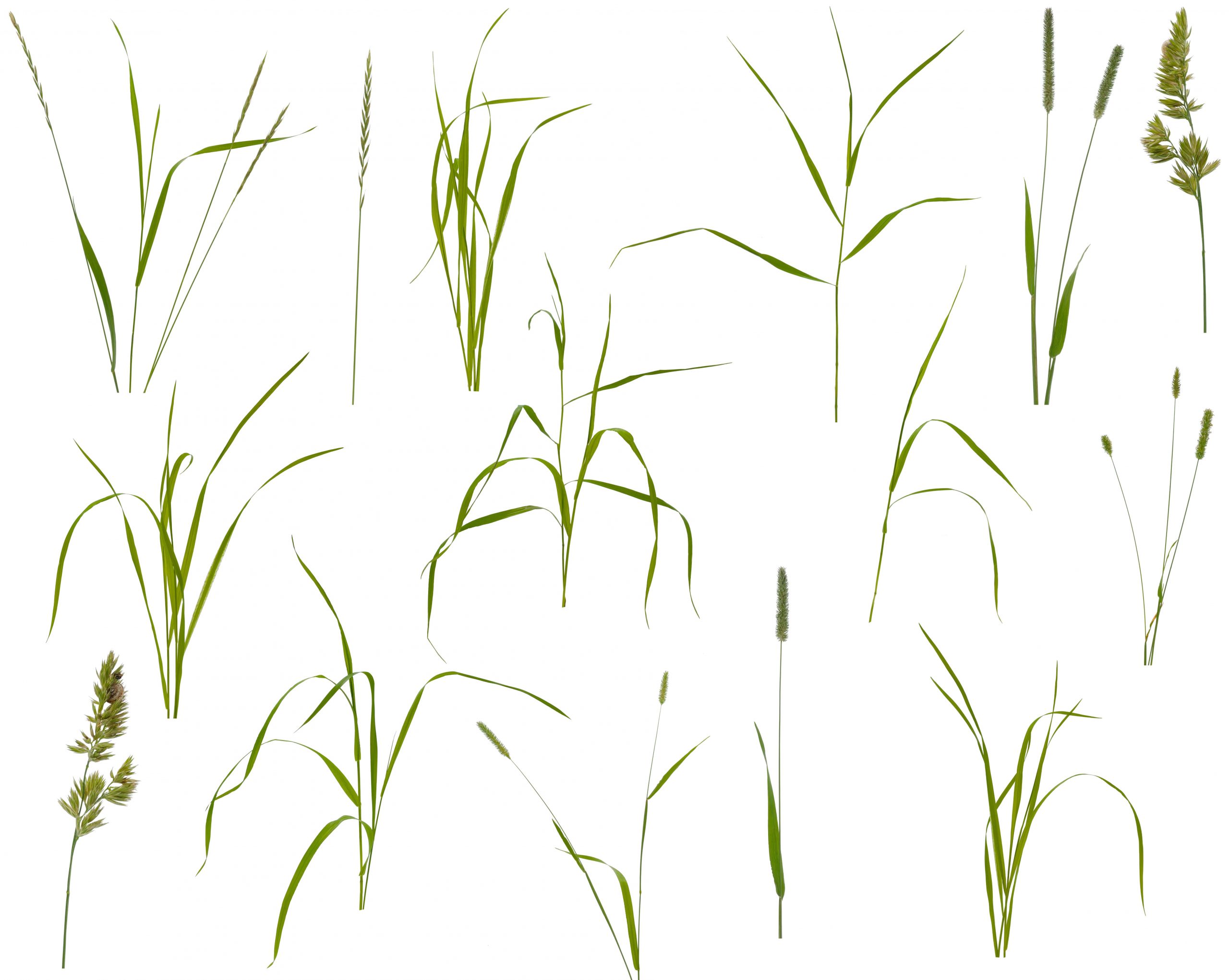
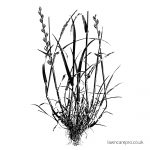



Hello, I have an invasive grass that’s come from garden next door. It appears it come under the fence and the roots spread across the lawn and stands out being much taller and darker in colour. I have dug up an area and the roots spread just under the service and are very hard to get out as break easy when pulled. Any advice on how I should remove. Thanks
Hi,
That’s a bit of a tricky one. We would recommend doing everything you can to help your lawn thrive, while making it difficult for the invasive grass. For example keeping it well-watered as we’re in summer, and cutting it a bit shorter. Also be sure to completely block off the fence if you can, so that the invasive grass isn’t immediately replaced by new growth when it eventually dies.
Thanks